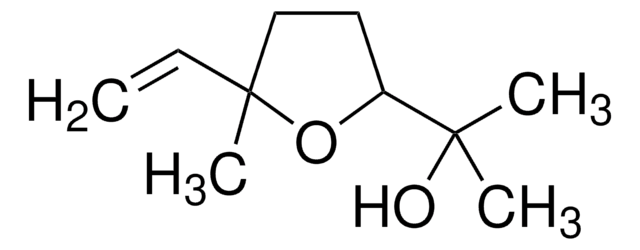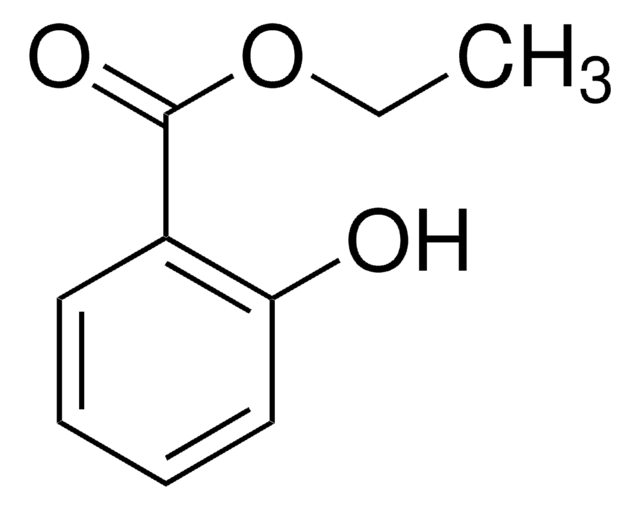W374600
Linalool oxide
natural, ≥95%
Synonyme(s) :
2-(5-Methyl-5-vinyltetrahydro-1-furyl)-2-propanol
About This Item
Produits recommandés
Qualité
Fragrance grade
Halal
Kosher
natural
Niveau de qualité
Agence
follows IFRA guidelines
Conformité réglementaire
EU Regulation 1223/2009
Essai
≥95%
Caractéristiques du produit alternatif plus écologique
Less Hazardous Chemical Syntheses
Use of Renewable Feedstocks
Learn more about the Principles of Green Chemistry.
sustainability
Greener Alternative Product
Indice de réfraction
n20/D 1.452
Densité
0.945 g/mL at 20 °C (lit.)
Application(s)
flavors and fragrances
Documentation
see Safety & Documentation for available documents
Allergène alimentaire
no known allergens
Allergène de parfum
no known allergens
Autre catégorie plus écologique
Propriétés organoleptiques
citrus; cooling; floral
Chaîne SMILES
CC(C)(O)C1CCC(C)(O1)C=C
InChI
1S/C10H18O2/c1-5-10(4)7-6-8(12-10)9(2,3)11/h5,8,11H,1,6-7H2,2-4H3
Clé InChI
BRHDDEIRQPDPMG-UHFFFAOYSA-N
Vous recherchez des produits similaires ? Visite Guide de comparaison des produits
Catégories apparentées
Description générale
Clause de non-responsabilité
Mention d'avertissement
Danger
Mentions de danger
Classification des risques
Acute Tox. 4 Oral - Skin Corr. 1B
Code de la classe de stockage
8A - Combustible corrosive hazardous materials
Classe de danger pour l'eau (WGK)
WGK 2
Point d'éclair (°F)
163.4 °F - closed cup
Point d'éclair (°C)
73 °C - closed cup
Faites votre choix parmi les versions les plus récentes :
Déjà en possession de ce produit ?
Retrouvez la documentation relative aux produits que vous avez récemment achetés dans la Bibliothèque de documents.
Global Trade Item Number
| Référence | GTIN |
|---|---|
| W374600-1KG-K | 4061838093998 |
| W374600-SAMPLE-K | 4061838094001 |
| W374600-100G-K | 4061834397861 |
| W374600-500G-K | 4061833908402 |
Notre équipe de scientifiques dispose d'une expérience dans tous les secteurs de la recherche, notamment en sciences de la vie, science des matériaux, synthèse chimique, chromatographie, analyse et dans de nombreux autres domaines..
Contacter notre Service technique










